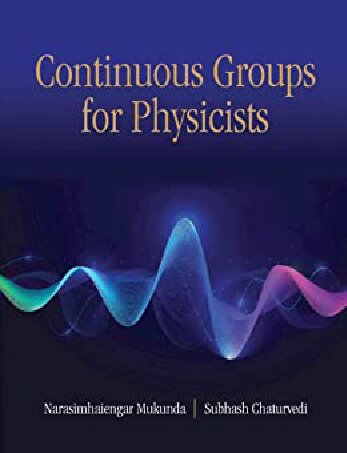

Most ebook files are in PDF format, so you can easily read them using various software such as Foxit Reader or directly on the Google Chrome browser.
Some ebook files are released by publishers in other formats such as .awz, .mobi, .epub, .fb2, etc. You may need to install specific software to read these formats on mobile/PC, such as Calibre.
Please read the tutorial at this link: https://ebookbell.com/faq
We offer FREE conversion to the popular formats you request; however, this may take some time. Therefore, right after payment, please email us, and we will try to provide the service as quickly as possible.
For some exceptional file formats or broken links (if any), please refrain from opening any disputes. Instead, email us first, and we will try to assist within a maximum of 6 hours.
EbookBell Team

4.0
6 reviewsThe theory of groups and group representations is an important part of mathematics with applications in other areas of mathematics as well as in physics. It is basic to the study of symmetries of physical systems. Its mathematical concepts are equally significant in understanding complex physical systems. It offers the necessary tools to describe, for instance, crystal structures, elementary particles with spin, both Galilean symmetric and special relativistic quantum mechanics, the fundamental properties of canonical commutation relations and spinor representations of orthogonal groups extensively used in quantum field theory.
Continuous Groups for Physicists introduces the ideas of continuous groups and their applications to graduate students and researchers in theoretical physics. The book begins with an introduction to groups and group representations in the context of finite groups. This is followed by a chapter on the special algebraic features of the symmetric groups. The authors then present the theory of Lie groups, Lie algebras and in particular the classical families of compact simple Lie groups and their representations. Several interesting topics not often found in standard physics texts are then presented: the spinor representations of the real orthogonal groups, the real symplectic groups in even dimensions, induced representations, the Schwinger representation concept, the Wigner theorem on symmetry operations in quantum mechanics, and the Euclidean, Galilei, Lorentz and Poincaré groups associated with spacetime. The general methods and notions of quantum mechanics are used as background throughout.